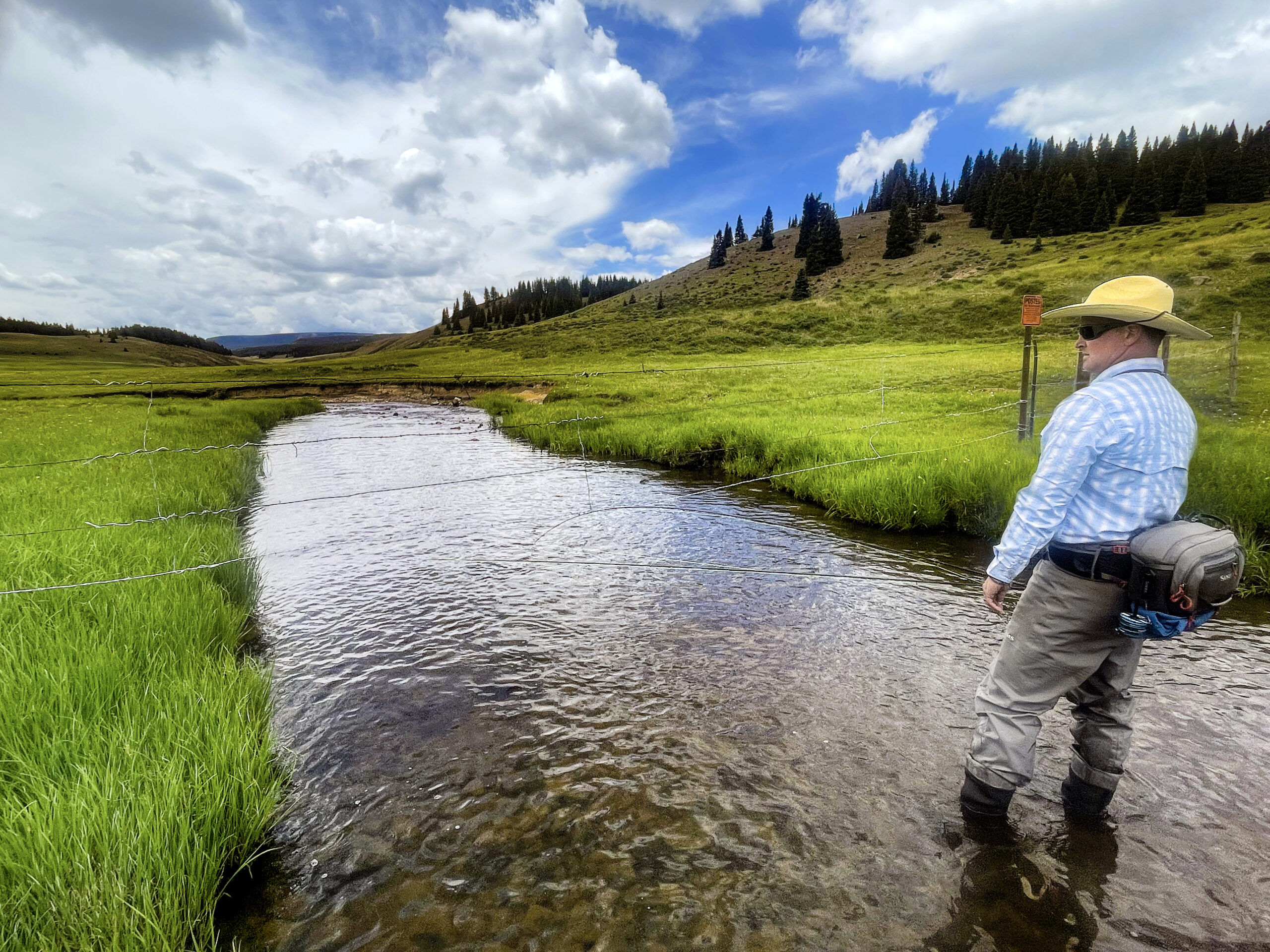WE’RE SHIN-DEEP in the stream when the first shot rings out. Startled, I look up right as a small brookie swipes at my dry fly. I set late but manage to stick him anyway, lifting the rod and swinging the trout into the palm of my left hand. Reaching down to slip out the hook, I look over at Jason Kerkmans, who must be thinking the same thing I am. Only he says it first.
“They’re not shooting at us, are they?”
“I don’t think so,” I reply. “But I have a feeling that was meant for us all the same.”
The barbed-wire fence stretched taut over the water in front of us looks sharper and more intimidating than it did a moment ago. On the upstream side of the fence, we can see a small, green cabin on a knoll overlooking the water. A few paints are milling around in the corral out back. Along with the barbed wire crisscrossing this wide-open meadow, these are the only visible signs of humans in any direction.
Kerkmans and I are in the high country of northern New Mexico on a remote, upper fork of an anonymous river. It’s narrow enough to spit across and shallow enough to wade the deepest holes without getting your shirt wet. It’s also loaded with fish. We can see the little brookies pushing wakes in the shallows and rising underneath grassy cutbanks. Between the two of us, we’ve caught and released at least 60 in the last couple of hours.
Now we’re faced with a decision: Do we duck under the fence and continue wading upstream toward the gunshot? Or do we avoid the conflict altogether and head back?
According to a recent state Supreme Court ruling, we’ve got every legal right to continue upstream as long as we stay in the riverbed. But we know that many landowners in the state are disputing this ruling, and they’re ready to use any tools necessary to keep public anglers out of streams they view as privately owned. In this case, that tool seems to be a rifle.
“We can turn around if you want to,” I tell Kerkmans as I reel in my line.
Then, as if on cue, the rifle cracks a second time. The sound echoes across the meadow and into my gut. If they wanted to shoot us, we’d be dead already, I think to myself. But that logic isn’t very reassuring when you’re standing in the open and armed with nothing more than a wimpy 3-weight.
Kerkmans, meanwhile, stares calmly into the distance, his face shaded by a wide-brimmed hat. He doesn’t bite.
“No, I say we go ahead.”
Then he ducks the lowermost strand of barbed wire, and I follow.
Testing the Waters
Kerkmans and I waded up the river that sunny June afternoon because of a decision the New Mexico Supreme Court made on March 1. That decision overturned a State Game Commission rule that allowed private landowners to exclude the public from streams flowing through their property. The court’s decision, as anglers and public land advocates have interpreted it, effectively re-established the public’s right to wade and fish in these streams.
Kerkmans is a lifelong fly fisherman who grew up in New Mexico, and he played a small but significant role in the effort to clarify the state’s stream access laws. So, for him, the March 1 decision was both a vindication and a cause for celebration. And when I asked him in late March if he wanted to test the waters by tromping up a river in northern New Mexico, he was all for it.
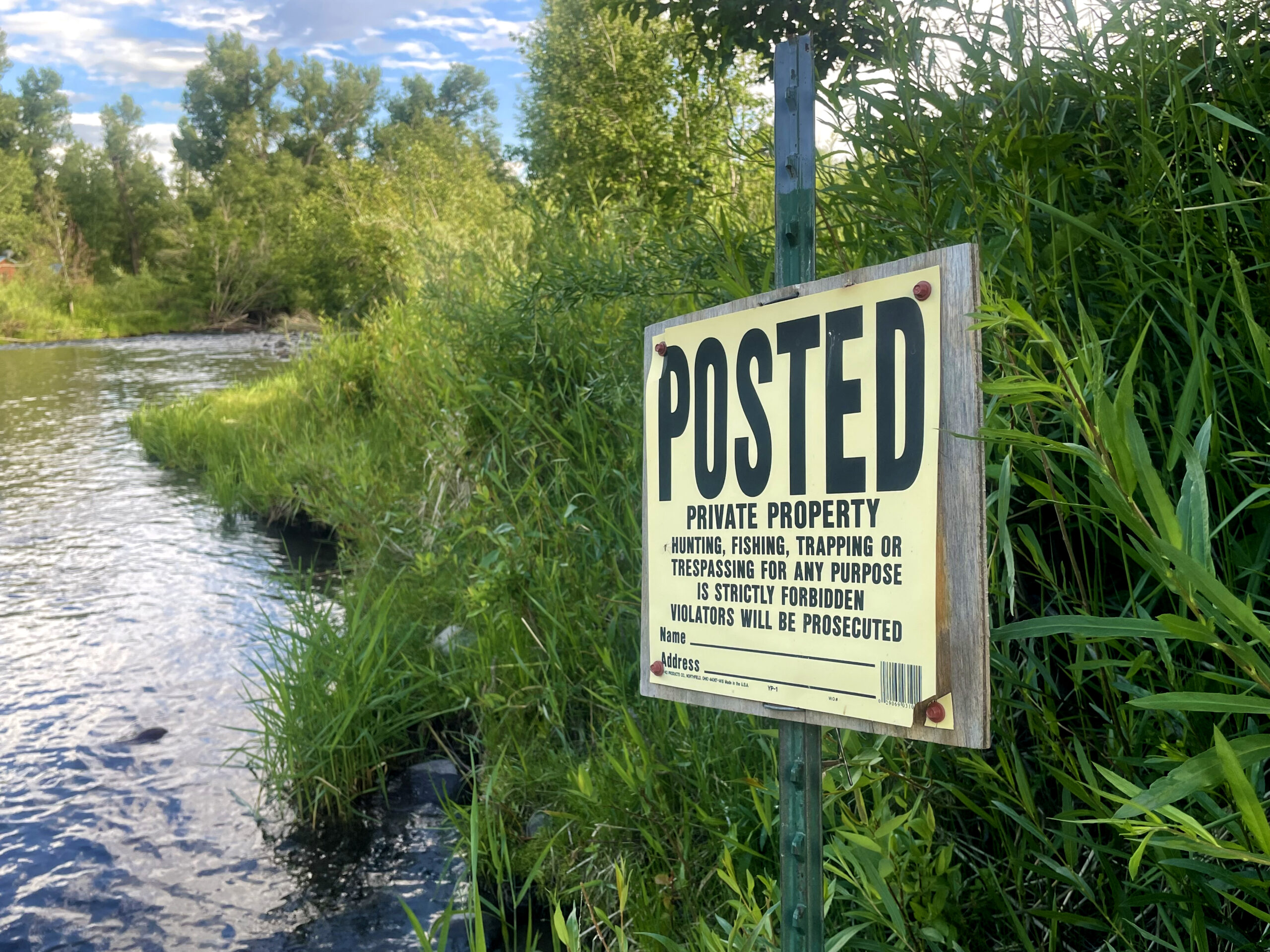
As we each pored over maps leading up to our meeting in Chama, we eventually settled on this stretch because Kerkmans had never been there. In fact, he’d never stepped foot in any portion of this river. Like every other New Mexican I’ve spoken with, he grew up under the impression that wading in a stream that flows through private property without explicit permission from the landowner was considered trespassing. And nearly every single mile of this river is locked up in private ownership. There was only one exception we could find for public access: a roughly 100-yard stretch that passes through the edge of Carson National Forest.
After a long, bumpy ride down a forest road and a hike off the beaten path, the two of us slipped into this bend in the river. Then we waded north, where the river runs down from near the Colorado border through a series of privately owned parcels.
By the time we heard the first gunshot, we had already ducked two barbed-wire fences strung across the stream.
Kerkmans Kicks a Rock
When Kerkmans was 10, his grandfather gave him his first fly rod and taught him how to cast.
“It was early in the summer when he gave me that rod,” Kerkmans says. “But instead of taking me fishing, he’d take me out to the gravel driveway and have me cast at rocks. He said that once I could hit a rock consistently, I could try casting in the river, and it was probably late August or September by the time I got my feet wet.”
Like many boys who catch the bug at a young age, Kerkmans was happily doomed to a future filled with soggy sandwiches and leaky waders. As life carried him in different directions, the pull of trout streams never dissipated. Instead, his appreciation for these places matured with age. And during his first year of law school in 2011, roughly 24 years after he learned to cast a fly rod, Kerkmans was daydreaming about trout streams as he sat in the University of New Mexico library.
“I think I was studying for a contracts final, and I was looking for any reason to procrastinate,” he explains. “So I started researching the rules surrounding stream access in New Mexico and figured I should see what the actual source of this prohibition was.”
The prohibition he’s referring to was a rule from the New Mexico Department of Game and Fish Rules and Information booklet: “It is trespassing if a person enters private property that is legally posted, and they do not have written permission to be there. This includes streams and river bottoms located in private property.”
As Kerkmans dug deeper, he was unable to find any legal basis for this rule that everyone had long accepted as the law of the land. What he did find was a landmark case from 1945. Known as the Red River Valley lawsuit, it led to the only ruling in state history that deals directly with the stream access issue. At the heart of this issue is a simple question that has sparked complex legal battles in Colorado and several other Western states: Who owns the riverbed?
All five applications came from very wealthy Texans. These guys couldn’t do what they wanted to do in their state, so they bought land in ours.”
—Jesse Deubel, executive director of the New Mexico Wildlife Federation
The lawsuit came about when the Army Corps of Engineers dammed the Conchas and Canadian Rivers to create Conchas Reservoir. This flooded the valley, a chunk of which was owned by the Red River Valley corporation. As people came out to fish on the reservoir, the corporation argued that since it owned the land underneath the newly formed lake, it could prohibit the public from fishing or recreating on the lake itself.
The New Mexico Supreme Court ultimately ruled against the corporation, basing its decision on its interpretation of Article 16, Section 2, of the New Mexico Constitution, which states:
“The unappropriated water of every natural stream, perennial or torrential, within the state of New Mexico, is hereby declared to belong to the public and to be subject to appropriation for beneficial use, in accordance with the laws of the state.”
The court ruled that since fishing is a beneficial use of the water, the public’s right to fish superseded a private landowner’s right to exclude. This interpretation of the state constitution reinforced the public’s right to float and wade in streams that pass through private land.
“The small streams of the state are fishing streams to which the public has a right to resort so long as they do not trespass on the private property along its banks,” the justices wrote in their 1945 decision.
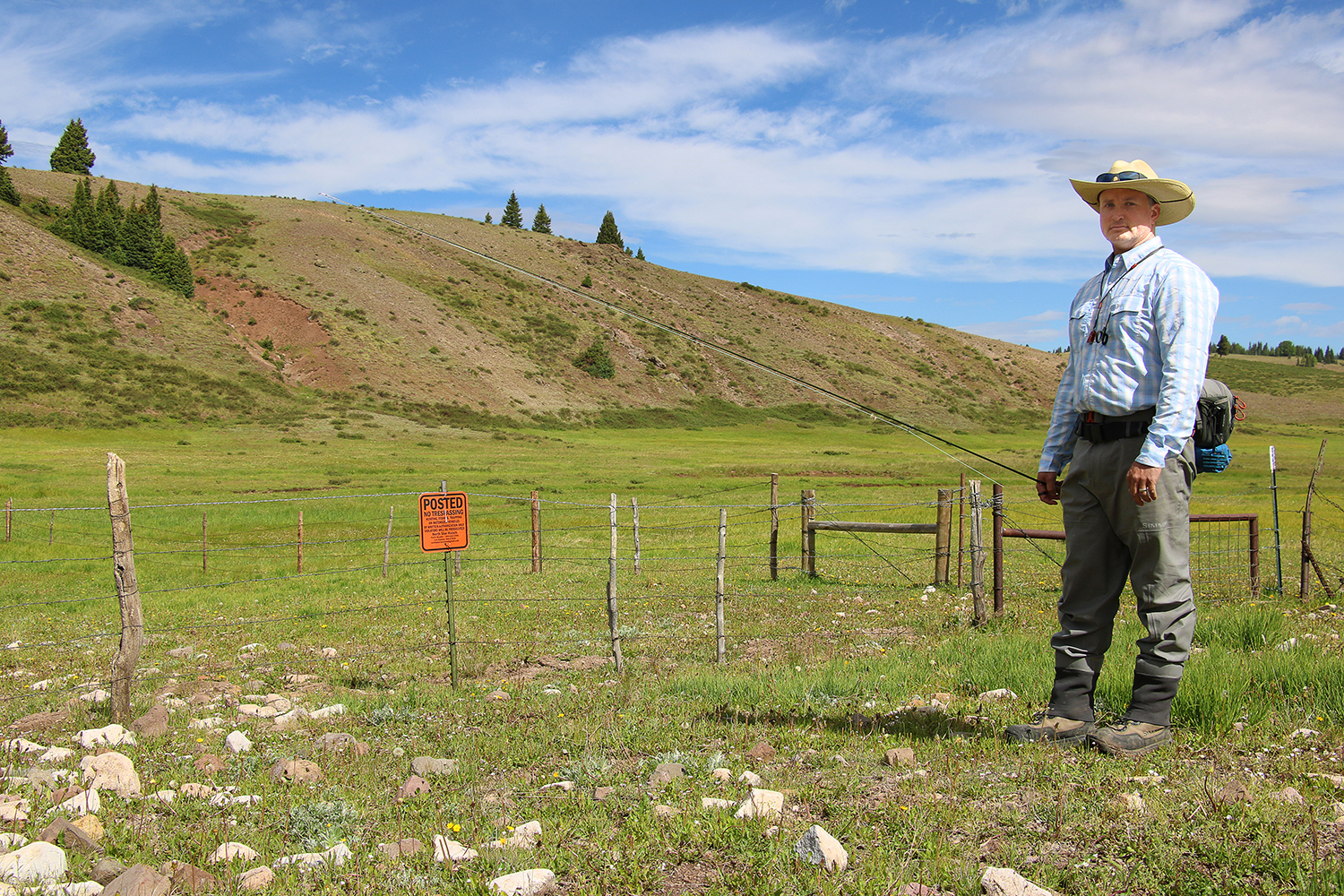
Recognizing the implications of all this, Kerkmans approached a UNM professor and proposed to write an essay about stream access in New Mexico. The article’s publication in a legal journal in February 2012 represented a seminal moment in what would become a drawn-out legal battle over stream access laws in the state.
“I’m much more of an observer from this point forward,” Kerkmans says. “A lot of other people did a lot more work than I did, and they deserve the credit for taking this as far as it went. I just kicked the first rock down the hill.”
Three years later, that rock would end up in the hands of state representative Luciano “Lucky” Varela, who carried it to the office of then–attorney general Gary King. Varela asked King to read the essay, verify Kerkmans’ claims, and write a formal opinion responding to a simple question: May a private landowner exclude others from fishing in a stream that flows across private property?
“No,” King wrote in his 2014 opinion. “A private landowner cannot prevent persons from fishing in a public stream that flows across the landowner’s property, provided the public stream is accessible without trespass across privately owned adjacent lands.”
“Everybody Was Wrong”
To private landowners in the state, this resounding “no” from the most powerful law enforcement office in the state was an affront to their entire way of thinking. By revealing that their supposed ownership of streambeds was never actually rooted in law, King’s opinion undermined the narrative that landowners had been pushing since well before the Red River decision.
And because the state legislature never did anything to codify that 1945 ruling into the book of law, this narrative had become ingrained in the public consciousness. Everyone just assumed that the state’s streambeds were privately owned, and that landowners had a legal right to fence out the public.
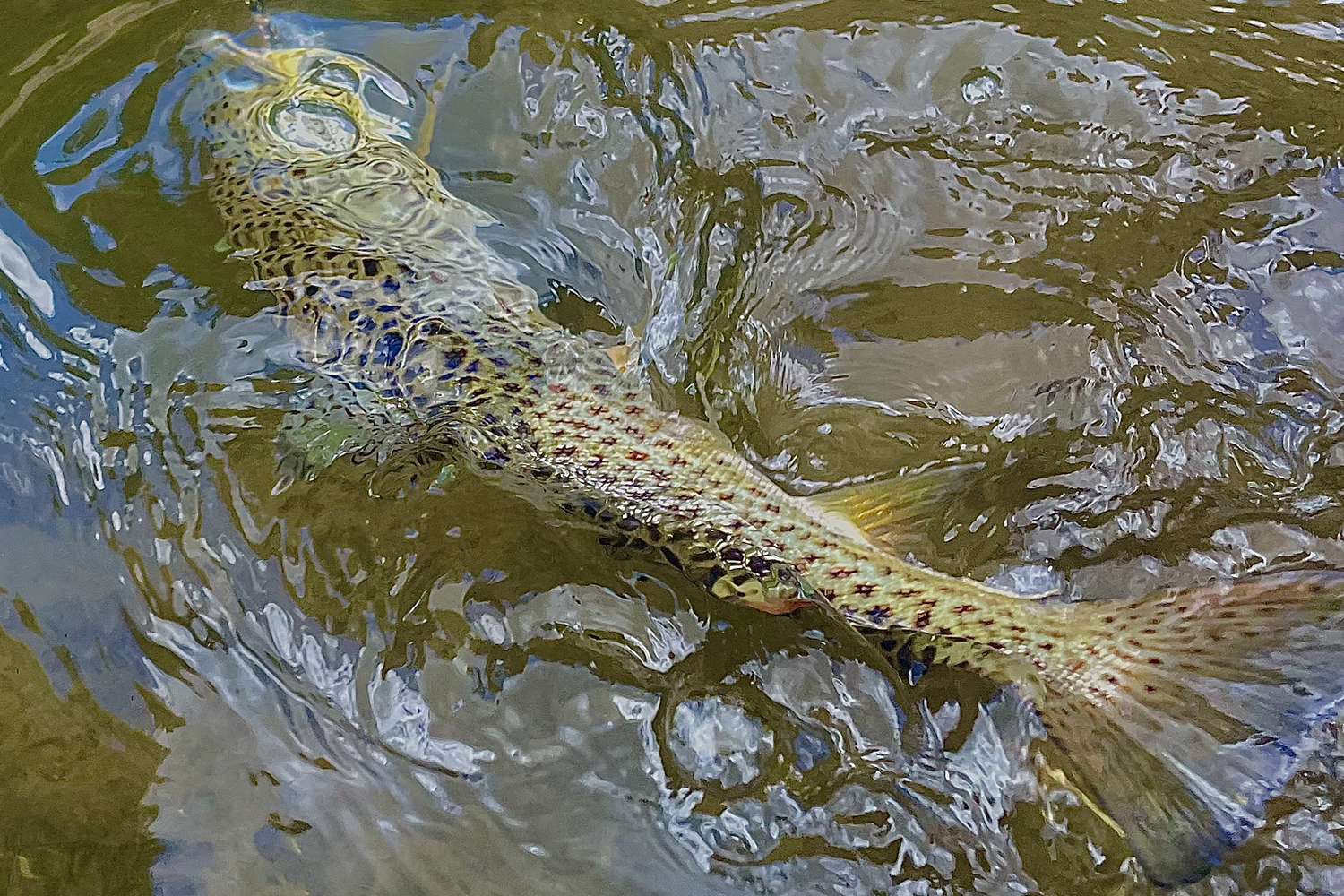
This included John Crenshaw, who, in the mid-1980s, was working in the Information and Education section of the New Mexico Game and Fish Department. Part of his job was to edit and publish the department’s regulations book—what many sportsmen in the state refer to as “the proclamation.”
“When I took over the proclamations, after all my experiences on the ground and talking with landowners, I really felt that the rules lacked clarity,” Crenshaw says. “So, I put the language in the proclamation that said the streambed was restricted unless you had landowner permission.”
In other words, Crenshaw took it upon himself to write that sentence into the state’s regulations book. He says he never got permission or feedback from any higher-ups, and the rule was never challenged by anyone. It was simply accepted by sportsmen and -women, who are much more likely to read the hunting and fishing regs than the state constitution.
“Then there was this AG opinion in 2014 that said quite the contrary,” Crenshaw says, “and that kind of shook up my belief system. Up until that point, everybody knew that it was illegal to walk up a privately owned streambed. Except everybody was wrong.”
Passing a Law to Fit the Rule
Not wanting to lose control of the resource, several private landowners began lobbying lawmakers in the state legislature to bring some clarity to the issue. The result was Senate Bill 226, which passed by one vote in 2015 and included the following statute:
“No person engaged in hunting, fishing, trapping, camping, hiking, sightseeing, the operation of watercraft or any other recreational use shall walk or wade onto private property through non-navigable public water or access public water via private property unless the private property owner or lessee or person in control of private lands has expressly consented in writing.”
This statute was important because sandwiched within the lengthy paragraph is “non-navigable.” The inclusion of this term, which was left undefined, opened the door for the State Game Commission to create rule 19-31-22, which allowed a landowner to apply for a “certificate of non-navigability.” If approved by the commission, these certificates would render a landowner’s stretch of river non-navigable, allowing them to legally exclude the public.
Sometime in 2018, the State Game Commission received five applications for certificates of non-navigability on stretches of the Chama, Pecos, Alamosa, Mimbres, and Penasco Rivers.
These applications came from three landowners: Dan Perry, a successful attorney who hails from Texas but resides in Santa Fe; Kenneth Hersh, an oil and gas magnate from Dallas; and Zane Kiehne, another Texan who was recently named as one of the largest landowners in the country.
In December 2018, the commission certified all five of these applications. This also had the unintended effect of leading many private landowners in the state to believe their stretches of river were non-navigable regardless of whether they applied for a certificate or not. As a result, more fences and “No Trespassing” signs went up across rivers throughout the state.
The Phone Call Heard Round the State
In 2019, recently elected Governor Michelle Lujan Grisham appointed a new seven-member State Game Commission with Joanna Prukop as the new chair. Prukop, whose entire career had revolved around wildlife and natural resource management, made it a priority to clarify the state’s stream access laws. NMGF had quietly removed the controversial trespassing rule from its regulations book that April, but the non-navigability rule remained.
“Everyone on the commission knew that rule was problematic,” Prukop says. But as soon as she began the public process of looking into the rule, she says she was met with opposition from both the attorney general’s office and the governor herself. After standing up to the AG’s office and bringing up the rule during a commission meeting in November, Prukop received a phone call on December 31 from the governor’s chief of staff, who told her she wouldn’t be reappointed in 2020.
“What’s happened in this debate too often is that proponents of opening streams have cast the issue as greedy landowners trying to exclude the public and privatize streams for their own enjoyment, their own profit. By saying that, you create an enemy to rally people around.”
—Lesli Allison, executive director of the Western Landowners Alliance
Her removal from the State Game Commission made headlines, and she received another call weeks later from Albuquerque attorney Gene Gallegos. Gallegos told her the whole situation just seemed wrong, and he said he’d be willing to file a lawsuit in the state Supreme Court, pro bono. So Prukop reached out to Jesse Deubel, executive director of the New Mexico Wildlife Federation, and Deubel started building a coalition of petitioners that would include Backcountry Hunters and Anglers and the Adobe Whitewater Club.
Feeling that the next logical step was to get the controversial rule in front of the court, those groups filed a lawsuit against the State Game Commission on March 13, 2020. The commission was named as the respondent in the case, and several parties joined the commission’s side as intervenors-respondents. This included groups like the Western Landowners Alliance and the New Mexico Council of Outfitters and Guides, along with a contingency of more than 15 landowners that included Dan Perry, Kenneth Hersh, and Zane Kiehne.
Lead-Up to the Showdown
It would take almost two years for both sides to get their day in court, but the state Supreme Court finally heard oral arguments on the case in March 2022.
By this point, Deubel explains, the three public-access petitioners had received a groundswell of support from people who joined their side by filing amicus briefs. Supporters included more than 20 additional groups, along with U.S. Senators Tom Udall and Martin Heinrich. The latter had already weighed in on the issue of navigability in a letter he sent to the commission in June 2021.
“The Game Commission regulation that purports to make the public’s right of access dependent on ‘navigability’ renders the entire application process a sham,” he wrote, adding that “navigability has never been the standard for access to public waters in New Mexico.”
Deubel agrees. “The term non-navigable was introduced in statute,” he says. “But it was a red herring. It doesn’t mean anything because navigability means nothing in New Mexico. It was introduced as this way to get people to fight with one another. Navigability was irrelevant from the start.”

The way he sees it, the battle over stream access in New Mexico boils down to wealthy individuals using their influence to privatize rivers for their own financial gain or enjoyment. He explains that these actions also fall in line with the state’s long-standing tradition of privatizing publicly owned natural resources.
“All five applications came from very wealthy Texans. Every one of them,” Deubel says. “Which is kind of ironic, because you can jump in an inner tube and float down a river in New Braunfels or San Marcos. These guys couldn’t do what they wanted to do in their state, so they bought land in ours.”
The Western Landowners Alliance sees things differently. The alliance’s mission is to sustain working lands, connected landscapes, and native species, and executive director Lesli Allison says this argument is misguided.
“What’s happened in this debate too often is that proponents of opening streams have cast the issue as greedy landowners trying to exclude the public and privatize streams for their own enjoyment, their own profit,” she says. “By saying that, you create an enemy to rally people around.”
Allison explains that this argument also overlooks the critical role that landowners play as environmental stewards of these streams. She says that some of these individuals bought land specifically to invest in conservation, and together they’ve made significant investments to restore the waterways that flow through their property.
Turning those fragile aquatic habitats into “recreational footpaths for the public,” she says, would not only undermine all the conservation work these landowners have done—but it would represent a net loss for the resource in the long-term. She contends that public agencies often lack the resources to properly manage areas where the public already has access, and she believes that allowing unfettered access to streams on private land will further degrade fisheries and wildlife habitats.
“If people really care about fishing, they have to first think about the resource—about what we’re doing when we open every stream to public recreation,” Allison says. “Personally, it breaks my heart because I know what this decision is going to do to those streams and the resources I care about. I wish the sportsmen’s community would take a longer, bigger view and put resource conservation first before always talking about recreational access.”
The Court Speaks
After an hour of arguments on March 1, the court deliberated for about 15 minutes before Chief Justice Michael Vigil announced their unanimous decision. The justices found the State Game Commission rule to be unconstitutional. They immediately voided all certificates of non-navigability and ordered the commission to cease from further implementation of the rule. Vigil said that the court’s written opinion explaining the legal reasoning behind its decision would follow.
The state Supreme Court has not yet issued that written opinion. A clerk with the court told Outdoor Life this is normal, and that the court typically takes several months or longer to issue a written decision.
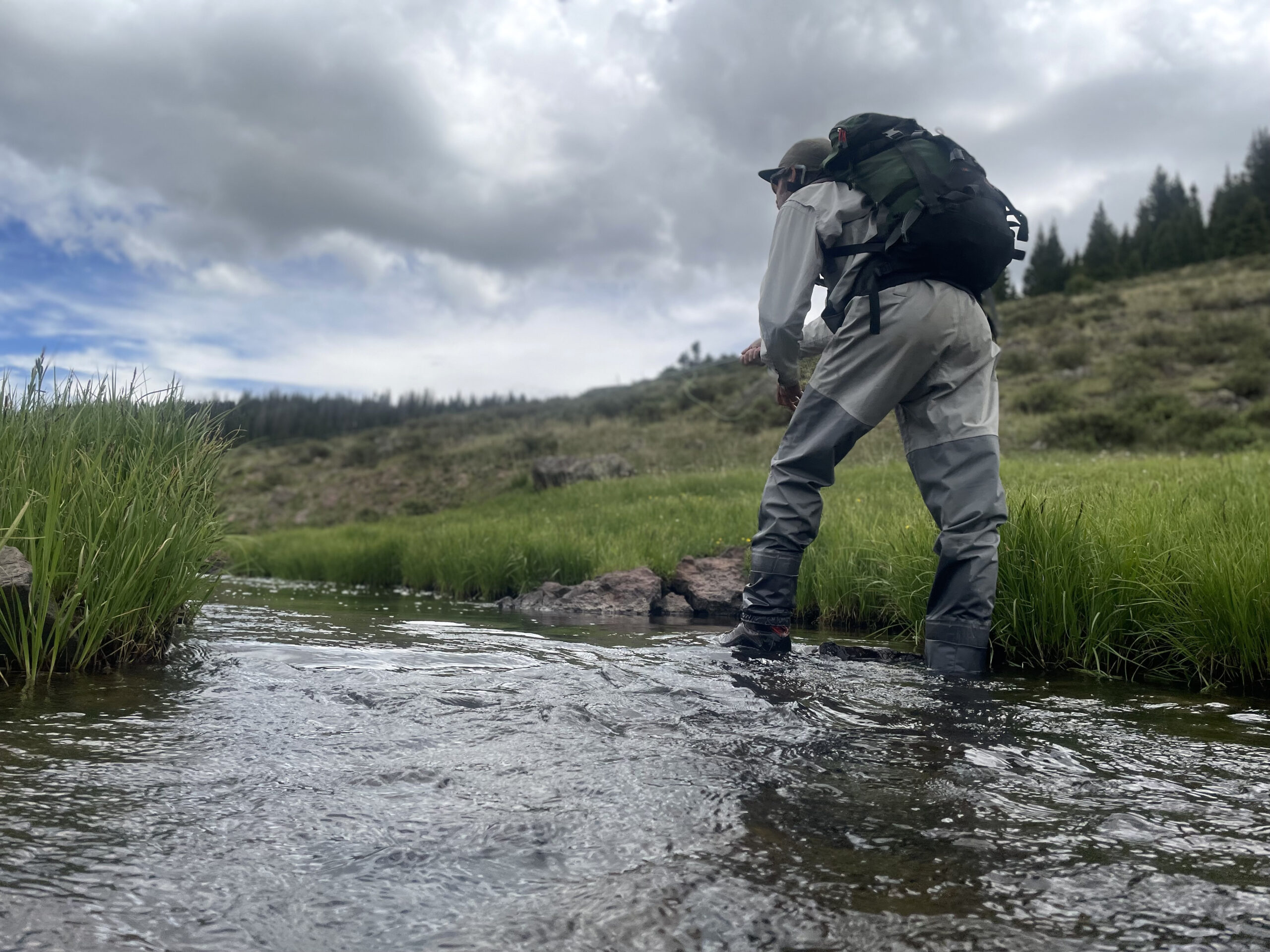
But this delay has also led to a lack of clarity around the issue. The pro-public-access crowd has put out statements saying the public can now wade and boat on streams that pass through private property—as long as they access the stream without trespassing over privately owned dry land. Meanwhile, private landowners and their supporters are arguing that until the justices release a written opinion, the status quo remains unchanged.
“Let’s be clear,” the New Mexico Council of Outfitters and Guides wrote on its website in April. “Walking and wading in a privately owned streambed is still illegal.”
Kerrie Cox Romero, executive director of NMCOG, says she stands behind the council’s April update. She explains that the state’s outfitting industry is built on relationships with landowners. And she says the council has always maintained that landowners own the streambed.
“If the Supreme Court comes back with a written decision, and it says that the state owns the streambed somehow, this will represent a taking.”
Romero says the parties involved are already looking at potential legal avenues to pursue, and neither she nor Allison ruled out the idea of taking the case all the way to the U.S. Supreme Court. But they can’t do this without first seeing the court’s written decision.
“It’s really a sad disservice that the Supreme Court is doing to New Mexico landowners—and also to anglers, recreators—in not clarifying what they meant. It has caused an enormous amount of confusion, and it’s going to lead to some pretty dangerous situations in my opinion,” Romero says. “It already has.”
A Thinly Veiled Threat
After ducking the fence, Kerkmans and I make our way upriver toward the green cabin overlooking the stream. By this point, there’s no doubt this is where the shots are coming from. We wave politely at a man looking down from the porch. He’s wearing a white cowboy hat and speaks loudly so we can hear him over the wind.
“As of right now I’m sighting in a gun,” he says. “So I’d just as soon not have you go up this way. Wouldn’t want to wing one of ya.”
“No,” Kerkmans says with a nervous laugh. “I don’t want be winged.”
“Where’d you guys come in at?” asks the man in cowboy hat. He’s leaning on a post with one hand shoved in the pocket of his blue jeans. Behind him, I can just see the rifle lying on a table.
“We came in through the National Forest and we’ve just been fishing and working our way upriver,” I explain. “Our understanding is that as long as we’re not on your land—”
“No, no. That ain’t in stone yet,” he says, stopping me short. “Far as I’m concerned, you’re trespassing. I don’t care what they say. I own this property.
“It’s like I just said,” he continues. “My shooting range is right up and down this river here, and I’m in the middle of sighting in my gun. I come up to my own property to do that.”
“Which you have every right to do,” I reply, “We’re just asking if we can—”
“I know!” he says. “And I’m just saying that if you go over there, I’m gonna be shooting, y’know, in your direction. I don’t want that because, hell, I’d have to bury you out here.”
With that, Kerkmans and I politely thank the man for his time and head back downstream toward the National Forest boundary.
What This Means for Anglers
In hindsight, neither of us was overly surprised by what happened on the river that day. Neither is Katie DeLorenzo, the Western regional manager for Backcountry Hunters and Anglers.
“In any access scenario where you have both public and private users, conflict is to be expected,” DeLorenzo says. “We anticipated pushback from the landowner side, but we’re not asking for anything that we don’t already have. We’re simply restoring the public’s right to public water.”
Still, Lorenzo says that “with great rights come great responsibilities.” For anglers in the state, this means being good stewards of the resource and educating themselves on the current laws and regulations before hitting the water. But this is easier said than done when the groups involved are sending out opposing messages.
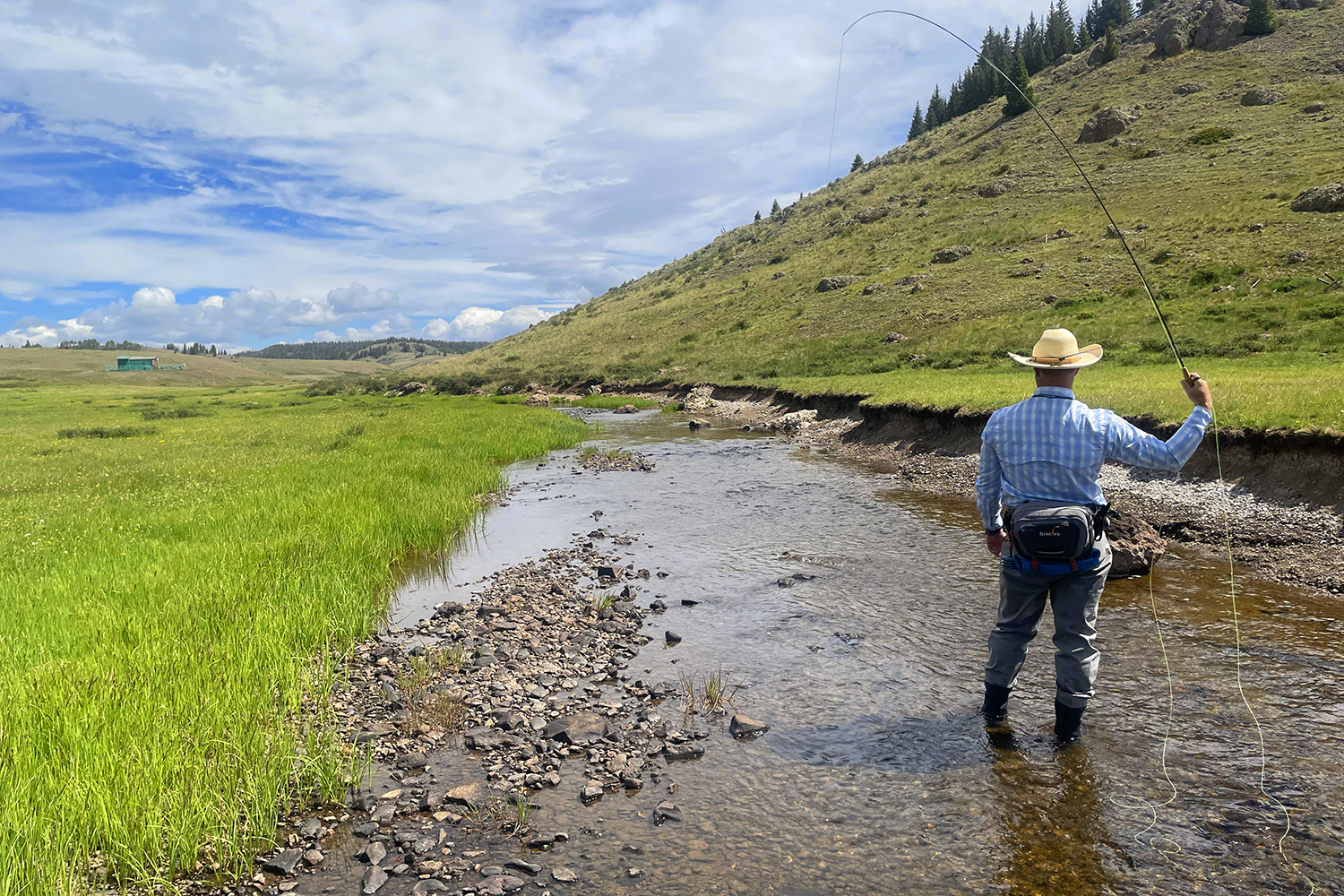
So I emailed NMGF on July 20 with a list of questions. I asked if what Kerkmans and I did in June would be considered trespassing under their interpretation of the law. I asked if the department had seen an increase in conflicts between members of the public and private landowners since the March 1 ruling. Most importantly, I asked what NMGF would tell people who are interested in walking up these rivers (through a legal access point) to fish, but who might be concerned about how a private landowner might react to them being there.
The department dodged every one of these questions.
“We have instructed staff to work closely with anglers and landowners to avoid any conflicts while we await a formal written opinion from the Supreme Court,” the NMGF wrote in an email to Outdoor Life. “We urge all parties to work together.”
The closest thing to clarification I could find from the department was an email that Col. Tim Cimbal, NMGF’s head of law enforcement, sent to Romero of NMCOG.
“As long as you legally access the stream and stay within the free-flowing water of the streambed (the wetted portion of the stream), then you can access the stream for recreational use (fishing, floating, swimming, etc.),” Cimbal wrote in June. “This is our interpretation thus far.”
I also reached out to the local sheriff’s office in the county where Kerkmans and I were fishing that day. I explained what Kerkmans and I did and asked whether New Mexico’s hunter and angler harassment laws would have protected us in that scenario. Maj. Lorenzo Aguilar deferred that question to NMGF, and I later learned that the state’s harassment laws have more to do with penalizing people scaring away game and fish than running off sportsmen and -women.
Aguilar did say that, as far as he knows, the sheriff’s office has not dealt with any conflicts on streams in the county since the March 1 ruling. He said he has never received a call from a landowner complaining about people trespassing in their stream. But he added that those calls would likely be referred to NMGF anyways.
“I believe that if you were fly fishing in a river and staying in the water the whole time,” he told me, “I don’t think that would be considered trespassing.”
A Politer Send-Off
After getting past the last fence, we sit down on the bank for lunch. Within about five minutes, Kerkmans and I are approached by another landowner, who pulls up in a side-by-side to talk to us through his fence. He says that he heard the gunshots and came down to make sure we were okay.
“These guys up here are pretty particular about trespassing,” he tells us. His neighbor in the cowboy hat is still fresh on our minds.
When Kerkmans asks him to explain the trespassing laws, he tells us what we already know: landowners are still waiting for the court to explain, in writing, whether the state’s streambeds are publicly accessible or privately owned.
“If you’re on this side of the fence, doing what you’re doing right now, you’re trespassing,” he says, nodding his head at our seat on the bank. “But I don’t have any problem with you being where you are right now.”
Then he wishes us well and drives away.
“I mean, I get it,” Kerkmans says, chewing on a sandwich. “If I bought a piece of land relying on this well-spread belief in New Mexico that excluding people from streambeds is a property right—and then, lo and behold, that’s not what the actual law is—I’d be upset as well. We’re disrupting what a lot of people took for granted.”
I nod, looking down at my boots, and point out a school of six or seven brook trout passing by. They pay us no mind, swimming slowly upstream as if we’re not even there.
Read more OL+ stories.
